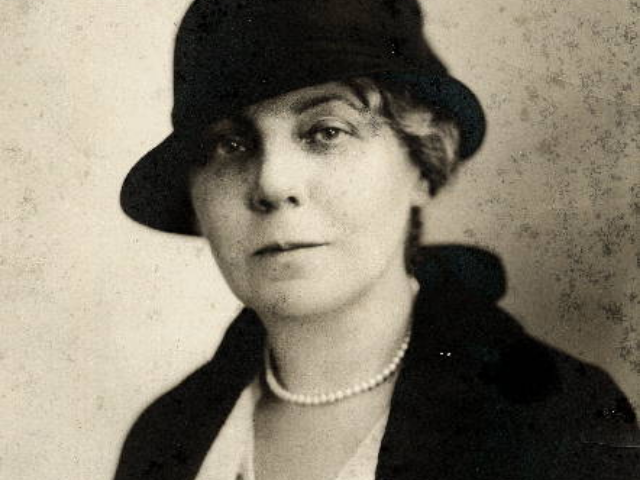
Beatrice Witte Ravenel. Image uploaded by Find a Grave user wickedmessenger.
(1870-1956) Beatrice was born in Charleston, South Carolina to Charlotte Sophia Reeves and Charles Otto Witte. She and her sisters grew up in the mansion which was subsequently turned into the private girls’ school Ashley Hall. Finishing her education at Miss Kelly’s School in Charleston, Ravenel entered the Harvard Annex (later Radcliffe College) as a special student in 1889. She studied for three years, left, and then returned in 1895 for two more years. During that period, she published a few short stories and poems and was considered a bright intellect, equal to many of the men at Harvard.
Forsaking the promise of an independent life in the North, Beatrice returned to Charleston and married Francis Gualdo Ravenel. Francis invested much of his wife’s inheritance, lost it, and died in 1920, leaving her to care for their daughter, also named Beatrice (later the author of Architects of Charleston). Turning to writing to support herself, Beatrice Ravenel produced poetry and short stories, mostly derivative and plot-heavy, although one, “The High Cost of Conscience,” was published in the first volume of the O. Henry Memorial Short Stories.
Ravenel is possibly the best example of the influence of the Poetry Society of South Carolina on local writers; its founding in the year of her husband’s death brought her into a poetry-conscious environment. Here she met the poet Amy Lowell. Lowell and the Imagist school were strong influences on Ravenel, prompting great changes in her work, which Lowell encouraged and championed. The poetry that Ravenel wrote in the 1920s reveals a broad intellectual outlook and a warm sensual glow. She wrote of outsiders and the dispossessed, such as the Yamassee Indians who lost their land to the whites, and a young actress, soon to die, musing on her young son. The latter, “Poe’s Mother,” was her most reprinted work and shows her difference from other Charleston poets, who often celebrated local lore, while Ravenel examined subtle subconscious states and philosophic points. This was perhaps due to her having been a student of William James, George Santayana, George Baker, and others.
In 1919 Ravenel also began to write editorials, mostly on foreign affairs, and reviews for her brother-in-law William Watts Ball, editor of the Columbia State. Her one volume of poems, The Arrow of Lightning, came out in 1925, with Ravenel paying part of the cost. She married Samuel Prioleau Ravenel, a distant cousin of her first husband, in 1926 and, no longer needing to support herself, slowed her production. She traveled widely and still wrote arresting and sensual lyrics, which were not published in her lifetime. Ravenel was buried in Charleston’s Magnolia Cemetery, all but forgotten. In 1969 a book of her poems, edited by the Charlestonian Louis Rubin, was published, and in the ensuing years scholars and critics began to claim her as the best poet of the Charleston Literary Renaissance and the author of some excellent individual works. In 1995, Ravenel was posthumously inducted into the South Carolina Academy of Authors.


